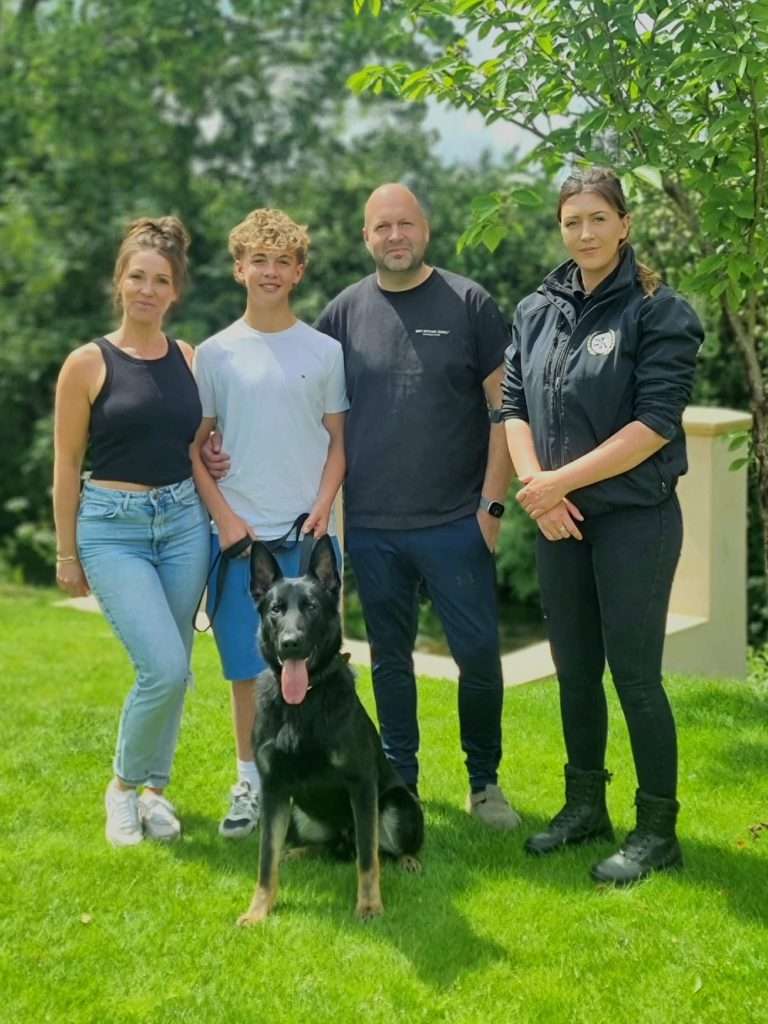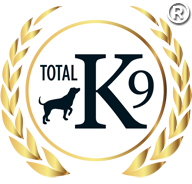Protection dogs offer a remarkable combination of loyalty, companionship, and security. Trained to defend their owners against potential threats, these animals are both guardians and trusted members of the household. However, integrating a protection dog into a family setting is not as simple as bringing home a typical pet. It requires careful planning, professional training, ongoing reinforcement, and a deep understanding of the dog’s unique needs.
In this comprehensive guide, we’ll cover everything you need to know to successfully bring a protection dog into your family home – from breed selection to training, socialisation, safety, and long-term care.
Understanding What a Protection Dog Truly Is
If you’re new to protection dogs and considering owning one, it really helps to know what you’re buying into. Protection dogs are highly trained animals that are capable of defending their owners from various threats. They are adaptable and highly effective as both a deterrent and a first line of defence against intruders, assailants and threats. They can also be a great addition to the family and happily bond with your loved ones at home.
More Than Just a Guard Dog
Unlike a guard dog that might be stationed outdoors to protect property, a protection dog lives inside the home and forms close bonds with its family members. These dogs are trained not to act aggressively without cause but to respond with control and precision when a genuine threat arises.
Balancing Work and Family Life
A well-trained protection dog can switch between “working mode” and “family mode,” behaving like a gentle pet most of the time but ready to defend its family if necessary. This makes them unique compared to other types of working dogs.
Choosing the Right Protection Dog for Your Family
The breed you choose can have a big impact on your success in integrating a protection dog. Not all breeds are naturally suited to this kind of work, as it is versatile and quite demanding. The best protection dogs combine intelligence, confidence, loyalty, and strong protective instincts. Some of the best breeds to consider as a protection dog include:
• German Shepherds are often seen as the gold standard for family protection. They are intelligent, adaptable, and deeply loyal, making them an excellent choice for households with children.
• Belgian Malinois are favoured by the military and law enforcement for a few good reasons. They’re fast, focused, and incredibly driven, but require owners with the time and experience to keep them mentally and physically stimulated.
• Rottweilers offer natural protective instincts combined with calm confidence. They bond deeply with family members, making them excellent for home protection when socialised correctly.
• Doberman Pinschers are alert, energetic, and highly loyal to their families. They require firm leadership but make excellent companions for those who can provide consistent training.
• Giant Schnauzers are less common but highly effective protection dogs. They are strong, watchful, and intelligent, making them a great choice for families looking for a unique but effective breed.
Should You Choose a Puppy or a Trained Adult?
Another major decision involves whether to bring home a protection puppy or purchase a fully trained adult dog. Each option comes with distinct advantages and challenges that are worth considering:
• Puppy: Raising a puppy allows your family to bond with the dog from the beginning, helping the dog grow up fully integrated into your home. However, this option requires several years of intensive training, socialisation, and professional guidance to ensure the puppy matures into a reliable protection dog. Puppies also go through critical developmental periods where early mistakes in training or handling can have long-term consequences.
• Adult: Acquiring a fully trained adult protection dog may be a faster route to having a reliable, skilled guardian in your home. These dogs have already received professional training and temperament evaluation. However, even a trained dog will still need time to adjust to your unique household and establish trust with each family member. This transition period should be managed with the support of the trainer or provider to ensure a smooth adjustment.
Always Work With Reputable Trainers and Breeders
Choosing a reputable breeder or trainer like TOTALK9 ensures your dog has been properly screened for health and temperament. Avoid sellers who promise protection dogs without providing complete training documentation, health clearances, or references.
Preparing Your Home for Your Protection Dog
When it comes to getting ready for the new arrival at home, there are a few things you can do to help make the process as smooth as possible. In most cases, protection dogs will quickly adapt and bond with everyone in the household, but it can be helpful to prepare ahead. Below, we’ve gone over a few things you can do to prepare your home for your new protection dog:
Set Clear Family Expectations
Before your dog arrives, hold family discussions about rules, responsibilities, and routines. Everyone should understand how to interact with the dog and respect its role as both protector and companion. Setting rules and expectations early gives everyone the best chance of getting along right away.
Create a Safe, Structured Environment
Your home should have a structured environment for your protection dog so that it is safe and comfortable. This should include:
• A secure, fenced outdoor area.
• A dedicated crate or sleeping space for the dog.
• Quiet zones where the dog can rest and decompress.
These additions will help your dog feel more comfortable in this new environment and help it build confidence quickly. Just remember to keep everyone in the family involved and engaged with the new arrangement.
Introduce Family Members Gradually
When your new dog arrives, allow introductions to happen at a calm, controlled pace. Let the dog initiate contact and avoid overwhelming it with too many new people at once. Children, especially, should approach calmly and respect the dog’s boundaries.
The Importance of Ongoing Training
One of the most important things to get right with protection dogs is to ensure they have good training. This will ensure that both you and your animal companion will have the right mentality and tools to get the most out of one another.
Training Never Truly Ends
Even highly trained protection dogs require ongoing reinforcement to maintain their skills. Daily obedience practice ensures that commands stay sharp and that the dog remains mentally engaged.
Work With Professional Trainers
Consider scheduling regular sessions with a professional trainer who specialises in protection dogs, like our team at TOTALK9. This helps address any emerging issues early and keeps the dog’s protective instincts well-tuned but controlled.
Socialising Your Protection Dog
Proper socialisation helps your protection dog learn how to navigate real-world situations calmly. It’s also a great opportunity to strengthen your bond with your dog, so it’s a useful part of training across the board. You should be trying to introduce your dog to various environments, including:
• Parks
• City streets
• Vehicles
• Various people and animals
Always supervise introductions with new people or animals. Controlled exposure helps your dog remain confident and discerning, preventing overprotectiveness in everyday life.
Teaching Children Proper Interaction
It’s always a good idea to make sure your protection dog is comfortable around young people to ensure they’re safe around them. At home, you should also make sure your younger family members know how to interact with the dog. Children should be taught to:
• Avoid rough play
• Respect the dog’s personal space
• Follow the handler’s rules about interaction
Establishing these boundaries early helps create a safe and harmonious relationship between the dog and children.
Balancing Work and Relaxation
Just like us, protection dogs prefer not to be on high alert at all times. They need time to unwind and relax, too, so remember to balance their work and relaxation time to provide them a decent work-life balance.
Learning to Switch “Off Duty”
A well-trained protection dog knows when it’s working and when it’s relaxing. Many handlers teach a release or “off duty” command that signals the dog to switch out of protection mode and simply enjoy family life.
Physical Exercise Requirements
Protection dogs are high-energy animals that need daily physical activity. Activities like walks, runs, agility courses, and structured playtime help burn off excess energy and maintain physical fitness.
Mental Stimulation Is Just As Important
In addition to physical exercise, protection dogs need mental stimulation. Puzzle toys, scent work, and advanced training drills keep their minds sharp and prevent boredom-related behaviours.
Family Bonding Strengthens the Pack
Regular family activities that include the dog help build emotional bonds. These interactions reinforce the dog’s place within the family pack and contribute to its sense of purpose and security.
Handling Guests and Public Situations
When guests arrive, use a structured routine for introductions. Keep the dog leashed or crated initially and allow it to observe the guest calmly before allowing contact.
Public Behaviour Expectations
Protection dogs must demonstrate excellent public manners. They should be able to:
• Stay on command
• Remain calm around strangers
• Ignore distractions
• Respond to handler commands immediately
Common Challenges and How to Overcome Them
There are sometimes teething problems when living with a protection dog at the start. It’s best to address these issues early before the problem becomes more ingrained and harder to train out. So, be mindful of the following issues:
Over-Protectiveness
Some protection dogs may become overly suspicious of visitors or other animals if not properly socialised. Continuous exposure to various people and environments helps reduce unnecessary defensiveness.
Aggression Toward Other Animals
Protection dogs may sometimes exhibit territorial behaviour toward other pets. Controlled introductions, obedience reinforcement, and professional guidance can help resolve this issue.
Separation Anxiety
Since protection dogs bond closely with their families, they can develop anxiety when left alone for long periods, which might bring on destructive behaviour. Crate training, interactive toys, and gradually increasing time spent alone can help reduce anxiety levels.
The Reward of Integration Done Right
Successfully integrating a protection dog into your family requires time, effort, and dedication, but the rewards are immense. When done properly, your dog will provide you with unmatched personal security and also become a deeply valued member of your family. Protection dogs offer a unique bond built on mutual trust, respect, and love.
With thoughtful preparation, proper training, and ongoing care, you can enjoy the peace of mind that comes from knowing your loved ones are protected, while also sharing your life with one of the most loyal companions you’ll ever know.

